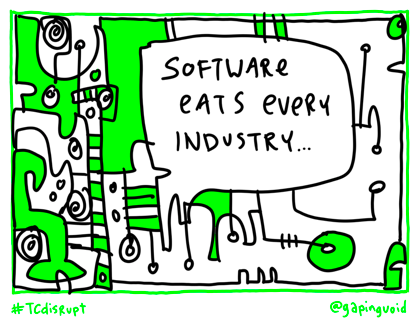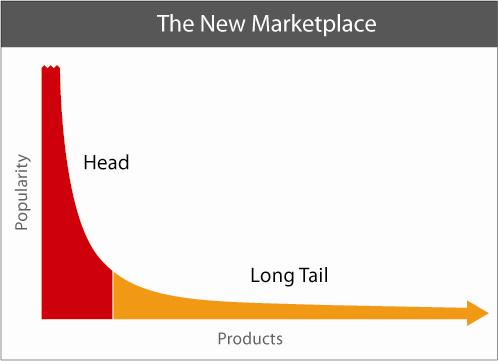Let’s talk about money.
Specifically, let’s talk about money in the Fine Art world. Check out this quote:
“So much money has entered the market that the dynamic has completely changed. Older gallerists may pine for those early days. Younger gallerists are more comfortable discussing money because today’s hypercharged market is all they know—it’s part of their DNA.” – Tim Blum, quoted in The Art Newspaper
How does that compare with your own experience as a professional artist? Is it crazy?
Consider this.
Techcrunch, a blog that covers technology news, especially startups and venture capital, awarded their Rookie Disruptor award to Art.sy in 2010. Art.sy has received more than $7 million in investment cash and has art world heavyweights like Larry Gagosian on its board.
Since then, a whole bunch of other art-sales startups have come out of the woodwork. 1stdibs, Curatorseye, Masternet, Paddle8, ArtSpace (with more than $12 million in funding), and more. Tens of millions of dollars are being invested because wealthy people believe that the way art is being bought and sold is ripe for massive change. “Disruption” in tech language.

Amazon, the largest online retailer in the world, has entered the art sales space. Ebay is heading back into it after two previous failed attempts. These are BIG companies that see BIG money in Fine Art.
Yet, you’re still thinking that the Starving Artist is the default position of the artist. The difference between these tech giants and you is mindset.
The Long Tail
Perhaps you aren’t in one of the huge galleries that partners with these companies. That’s okay too. You can still make a living from your art. Look at this chart.

This chart is from Chris Anderson’s The Long Tail. There are a couple of ways to explain this chart. Before the internet, retailers were only able to carry so much stock. Amazon came along and showed that they could stock…well, everything. Amazon didn’t have to sell more copies of the NYT Best Sellers than book stores to make more money. Instead, they could sell just a handful of copies of millions of obscure books. Amazon, coupled with search engines, made it possible for people to find that rare book they’d been seeking for years. Amazon was able to serve millions of niches in one place.
What does the Long Tail mean for artists?
Two things:
1. You can reach your niche. Conventional wisdom in the art world says that galleries can only represent artists who make “commercially viable” work. Commercially viable means interesting to the people that the gallery owners know. Period. What about people who are interested in weird, dark, twisted art? They’re probably not at the galleries, but you can find them on DeviantArt. The point is that with the broad reach of the Internet, you can sell art to a lot more people than just the ones the galleries know.
2. You can piggyback on the success of aggregators. Amazon. Etsy. Ebay. Their business models are all built around aggregating a bunch of stuff in one place. They spend billions to bring millions of people to their sites. You’re just one little artist out of the millions of people looking to sell something on their platform – but you can leverage that little presence into something much larger. There are now over 200 Art Malls online. You can have a presence on these sites as a way of capturing some attention, making a few sales, and drawing people in to your world so that you can eventually sell them on bigger purchases. Artists like Nathalie Van have literally sold hundreds of pieces of art on Etsy, building up a massive mailing list that she can then upsell.
Just remember that your success isn’t limited by “commercial viability”, by what gallery you’re not in, or by where you live and work. Artists are doing it all over the world. You can do it too.
Cory, once again you have produced a fresh idea just as I was puzzled and wondering what to consider next. Thank you so much!
Thanks Mike!
Hi Cory,
Interesting post, and food for thought! I’ve stayed away from most of the art mall sites, because they’re so crowded. There’s so much art that it’s difficult for anyone to find my art. And don’t you pretty much have to drive traffic to an Etsy site?
Cassandra – you have to drive traffic to any of these sites. You can’t just hope that you’ll magically get featured. But it does make it easier to get started, and you can reach a different audience than the one you currently have.
Very interesting article, yet we don’t have to forget these companies have a big marketing team behind them. It would be good to know how to transform art in to products and how to sell them effectively. All this being said thank you for opening our eyes.
Great point Mihaela. Turning art into products is actually the easiest way to sell art. Cafe Press, RedBubble, and Zazzle all make this incredibly easy.
Then you can leverage the traffic these companies have to start generating some revenue.
Redbubble is pricey and getting more so. I have found better product, service and pricing at teepublic. I know very few people will to pay $30 dollars for a graphic tee-shirt. I am relatively new to selling online but after having a store with redbubble I started looking for a better vendor. A lot of the other artists I follow have also migrated away from redbubble. For art prints society6 is pretty good in quality but they do not have larger shirt sizes so they are not the end all be all for on demand printing. It’s also good to look at the different flavors these different stores lean towards. Teepublic attracts a geekier crowd than society6 which has a more on “trend” fashion feel. If a certain vendor is already attracting people closer to your niche then you may find greater success since those people are already looking on that site for that type of work.
Cory: Great coaching advice as usual Cory! You have the best coaching content I’ve seen regarding developing a business plan for art.
Thanks.
Scott
Thanks Scott.
Hi Cory,
It looks like Natalie Van has a standard backdrop for her painting that is a contempory couch. She has used the same pic in many of her samples. Is there a pic service that she uses for backdrops?
Thank you for all you do!
I’m curious, 5 years later in 2018, what are the current worthwhile options. So many of those mentioned in 2013 seem overcrowded now.